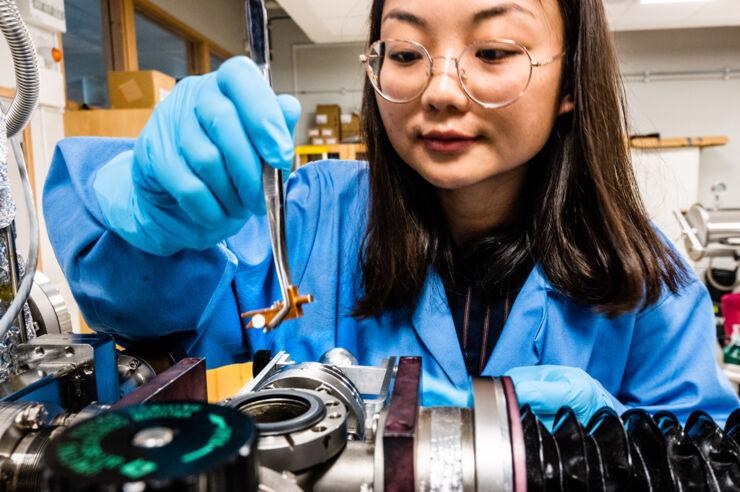Solar cells that are efficient and ecologically acceptable are essential when it comes to shifting to a fossil-free energy supply. Researchers from Linköping University have documented the release of energy in organic solar cells, something that was unknown previously.
 Xian’e Li, a Ph.D. student at Linköping University and principal author of the scientific article published in Nature Communications. Image Credit: Thor Balkhed.
Xian’e Li, a Ph.D. student at Linköping University and principal author of the scientific article published in Nature Communications. Image Credit: Thor Balkhed.
Nature Communications reported the findings. The findings might help develop more efficient solar cells.
To enable the full potential of organic solar cells to be exploited, there is a need for a clear picture of how they work. We have now obtained that picture. This provides a better understanding of how to create new efficient and sustainable solar cell materials.
Mats Fahlman, Professor, Laboratory of Organic Electronics, Linköping University.
Solar energy provides around 2% of the world’s total energy needs. However, its potential is significantly greater. The energy contained in the sun's rays is more than sufficient to fulfill our present and future demands.
However, to be practical and profitable, solar cells must be inexpensive and ecologically benign to manufacture. They must also be capable of absorbing a considerable part of the sun's rays and converting them to electrical energy.
Sustainable
Organic solar cells made of organic semiconductors are becoming more popular as a long-term solution. However, until recently, they could never compete in terms of efficiency with standard silicon-based solar cells, owing to the inherent energy loss associated with charge separation.
However, in 2016, a research team from Linköping University and their colleagues from Hong Kong demonstrated that energy loss can be avoided by employing various donor–acceptor materials that aid the electron’s escape from its hole.
Afterwards, energy loss decreased and efficiency improved. The issue was that no one knew how it had happened. It was obvious that it worked, but it was unclear why.
A few of the same Linköping University researchers have finally solved the puzzle that had caused so much debate in this sector. The researchers discovered what energy levels are necessary to minimize energy losses in a recent study published in Nature Communications.
To find out how the energy flows, we laid nanometer—thick organic semiconducting films in several layers one on top of the other, rather like a strawberry and cream cake. After that we measured the energy required to separate the electrons from their holes in each individual layer.
Xian’e Li, Principal Author and Ph.D. student, Linköping University
The mechanism behind the energy-efficient charge separation was mapped by the researchers. The thorough mapping hints at a new direction for organic solar cell development.
The Swedish Research Council, the Swedish Energy Agency, and the Swedish Government’s strategic initiative Advanced Functional Materials at Linköping University funded the research.
Journal Reference:
Li, X., et al. (2022) Mapping the energy level alignment at donor/acceptor interfaces in non-fullerene organic solar cells. Nat Commun doi:10.1038/s41467-022-29702-w.